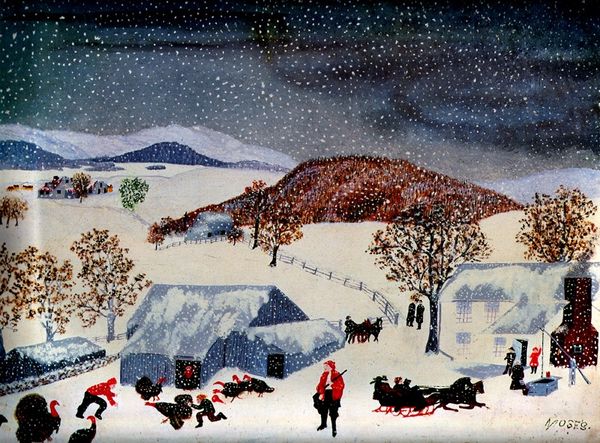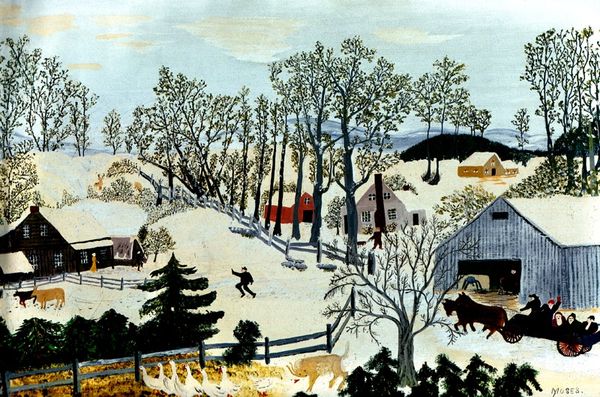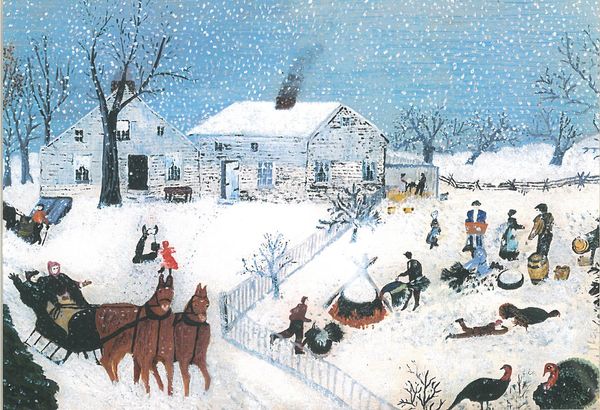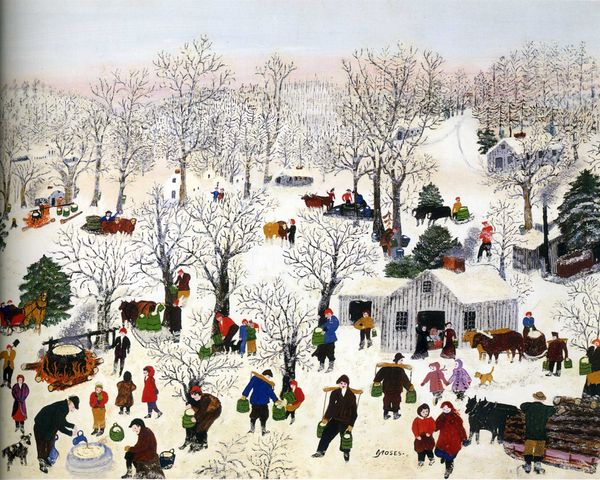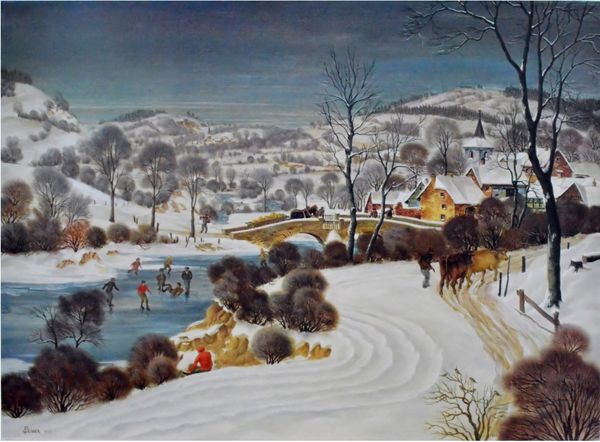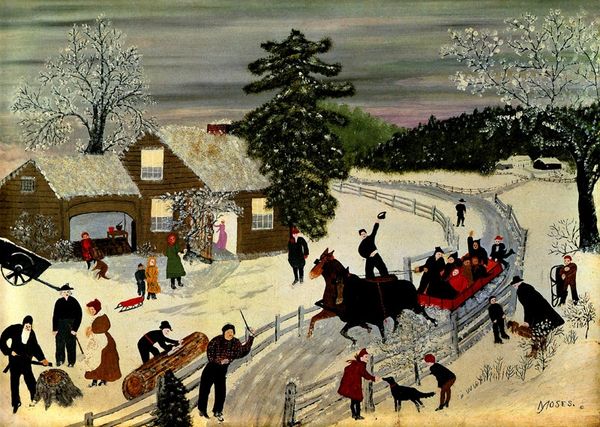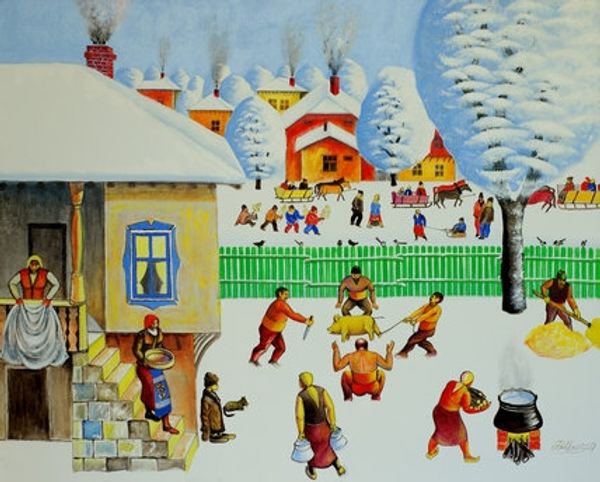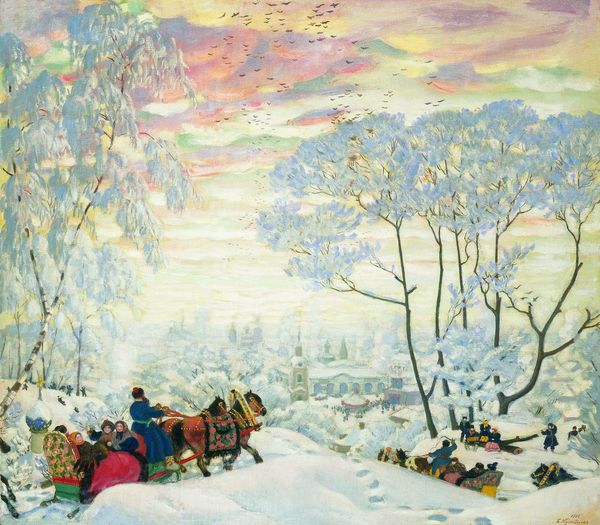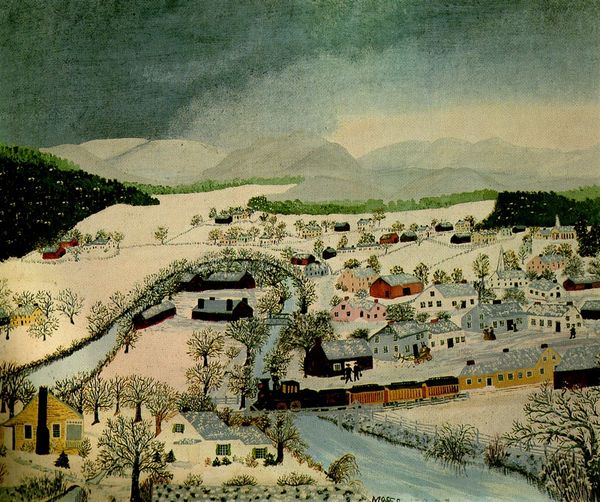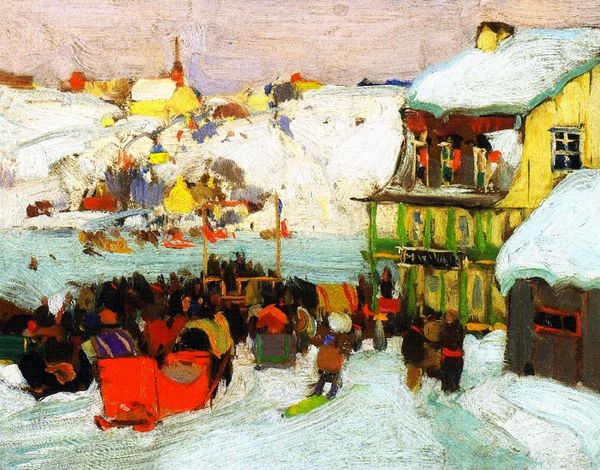
painting, oil-paint
#
painting
#
oil-paint
#
landscape
#
oil painting
#
folk-art
#
genre-painting
#
regionalism
Copyright: Grandma Moses,Fair Use
Editor: This is Grandma Moses' "Sugaring Off," painted in 1943, using oil on board. It depicts a flurry of activity around maple syrup production in a snowy landscape. The details are just incredible! What strikes me is how much the figures seem caught in motion, despite the stillness of the snow. How would you interpret this piece? Curator: What interests me most are the depictions of labor itself. Notice the arrangement: from the gathering of sap to the boiling down, each stage is meticulously rendered. Consider this labor within the context of 1943. Editor: I see what you mean. It's not just a quaint rural scene, but also an illustration of material transformation – sap into syrup – almost like an infographic on how things are made. Curator: Exactly! And who is doing the work? The painting democratically depicts adults and children, suggesting a collective effort and social bond reinforced through production. How do you view the materials? Editor: The materiality feels important – oil paint rendering the snow, the wood of the buckets, and the syrup itself almost seems tactile. And because the painting emphasizes labor, does that make the objects made by this labor also precious in a way? Curator: I’m glad you recognized this detail! Absolutely. Consider how mass production and consumerism were transforming American life at this time. Moses emphasizes local production, placing value on process and physical material that became scarce for city dwellers. Editor: I've learned to appreciate folk art through this perspective, that its visual language isn't naive but politically loaded because the scenes are made by laborers. Thank you. Curator: Indeed. Understanding art this way helps us move beyond simply appreciating what is depicted toward critically thinking how an artwork is made.
Comments
No comments
Be the first to comment and join the conversation on the ultimate creative platform.
